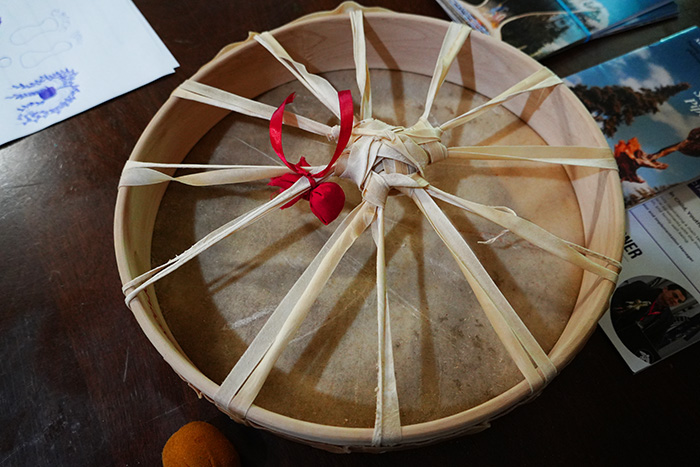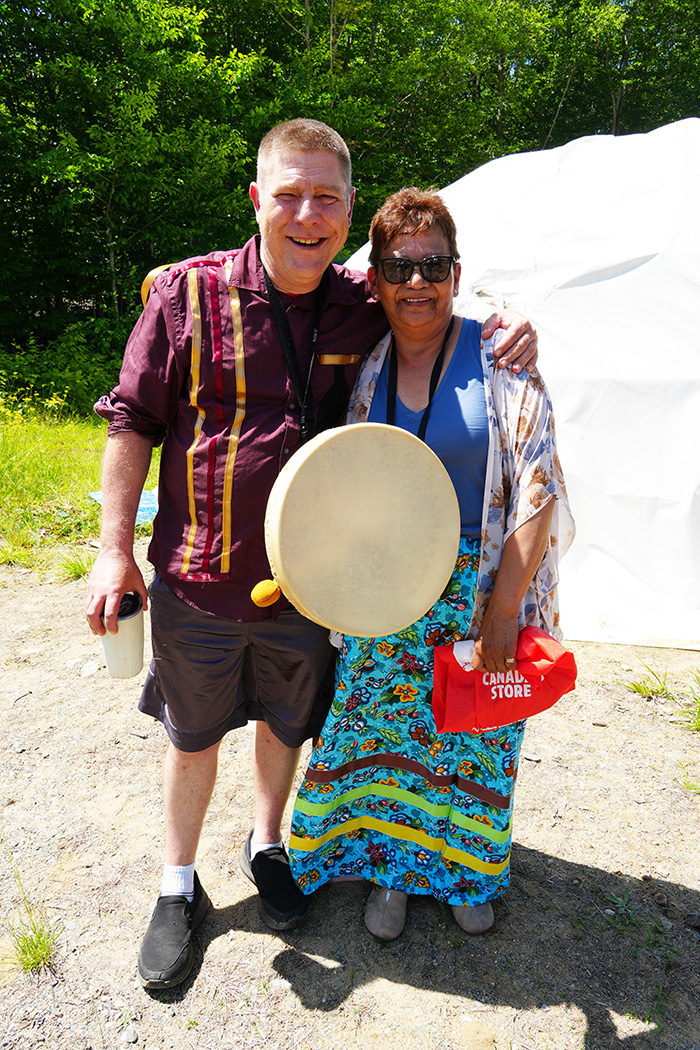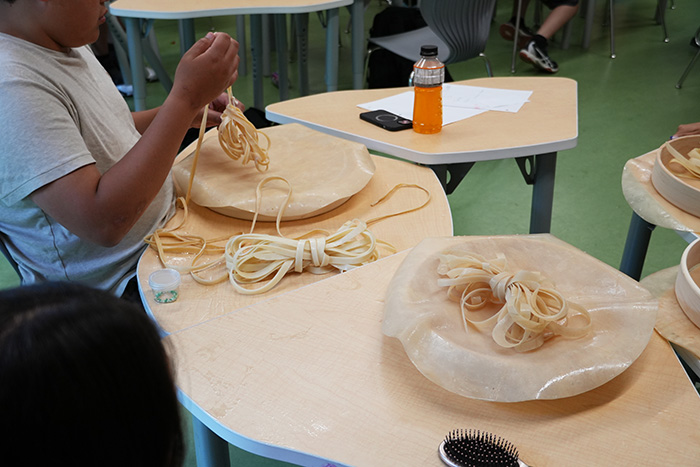
De’wegeke and Birthing Drums – not the same thing but equally special. In the Grade 8 classroom, at the beginning of June, Darren (DJ) McGregor, Andrew Commanda, and Justin Urquhart join together to share their knowledge of how to make a drum. They open the teaching with a drum song and introduce themselves and where they are from. Students are invited to introduce themselves in round table fashion, encouraged to do so in Anishinaabemowin, which some are able and confident to do. The teaching begins by students taking a look at a finished drum, learning about the history of the drum in Anishinaabe culture, and associated Anishinaabemowin words like de’wegan (drum), de’wegeke (drum making).
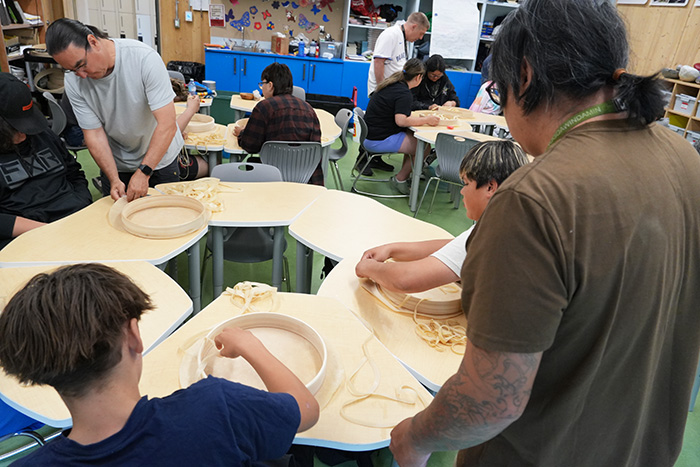
Next, they are invited to take tobacco and give an offering to the animal used to provide the materials for the drum. “This way the animal knows you are using it in a positive way, letting their spirit know they were used for something good,” says Darren. Students will construct their own De’wegan using wawaashkesh (deer hide), which is already soaking in large buckets of water to ensure their pliability, and which has undergone ceremony to ready them for use. A rim or hoop made from cedar or oak provides the form and represents the circle of life. The lacing is about 1/2-1” wide and about 20’ long, with the ends cut on an angle to form a ‘needle point’ used to thread through the circular hide shell and attach it to the rim. Nongo Nwii zhitoon de’wegan, or maybe you say Dewegan nwii zhitoon nongo; today I will make a drum. Unless you are on your moontime; then you are not permitted to. But that’s another story that can only be shared by a woman who has the knowledge to tell it.
Students are asked to consider things they are connected to, to gather their thoughts as they prepare to make their drum so that they pour all of those thoughts and goodness into the drum. Darren points out to the students that there is a smooth side and a coarse side to the circle – you want the smooth side on top, so put the smooth side face down on the table, then lay the rim in the centre on top of the hide circle. Next, he points out a series of holes on the drum circle – two holes close together, a few inches apart from each other, to allow one lace in and one lace out. The holes appear like numbers on a clock - Darren draws on the board to demonstrate - there are 12 sets of two holes, and you need to begin lacing working from the inside to the outside of the circle.
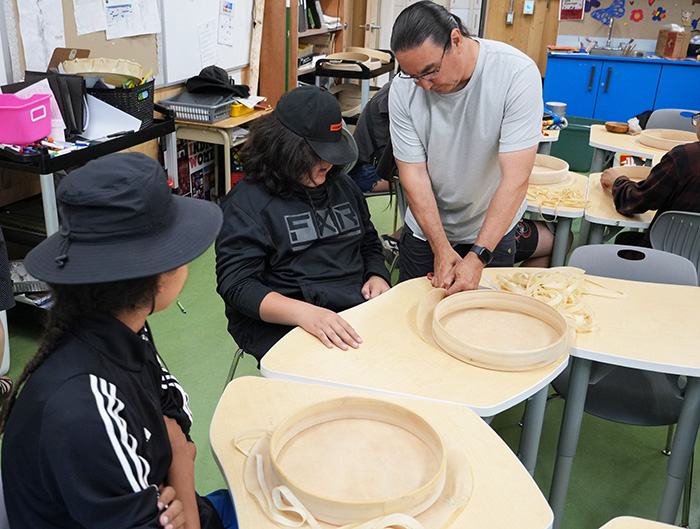
“If you take care of your drum, it will take care of you”, expresses Darren. He recalls how he started singing with the drum in 1988. He grew up in Toronto, but his Mom had grown up in Sagamok. Finding his way as Anishinaabe in Toronto was very difficult; not like Biidaaban students who are together here and supported in their community. He recalls how he met a friend at the Indian Friendship Centre in Toronto who invited him to drum. He was inspired hearing the beat of the drum even though he had never heard it before. When a baby is in the womb, it hears its mom’s heartbeat. We are spiritual beings becoming a human being, (Darren shared the creation story of travellers from star realm making their way to water realm, to Mother Earth realm) so that heartbeat teaches us about that love; that first security from our mother within the womb. From there, Darren learned more about drumming through the Rain Dance, Sun Dance, and Powwow – the drum helped him learn about his identity! Drumming guided him on a life path. “If you make those positive choices, you will find the most beautiful life path you are destined for as well,” shares Darren. He went on to explain how ‘the first gift from Creator is our voice; it carries our thoughts and intentions and if we use it in a good/kind way, it spreads goodness. Our voice has power! When we bring our voice and the drum together, it is comforting; brings comfort too.’
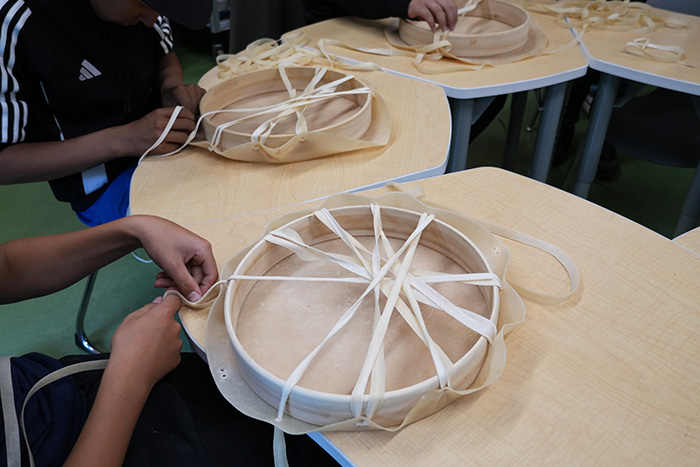
As students make their drums, they listen to what is being shared and receive assistance from several helpers to continue completing their drums during the class time. By making the drum, Darren suggests that the students could always find ‘home’ by carrying their drum with them on their journey.
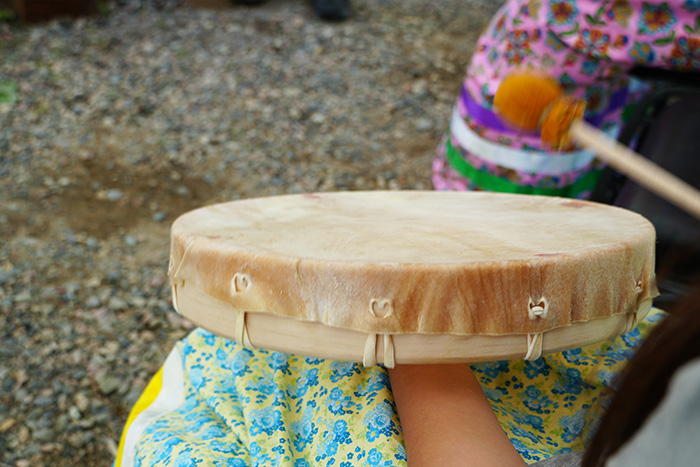
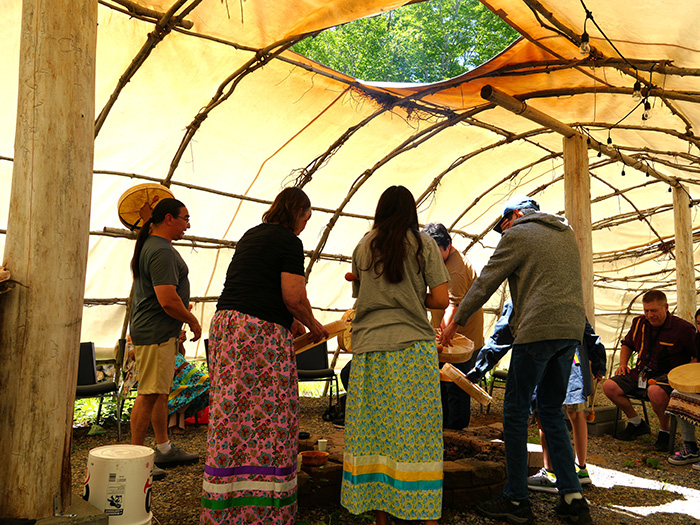
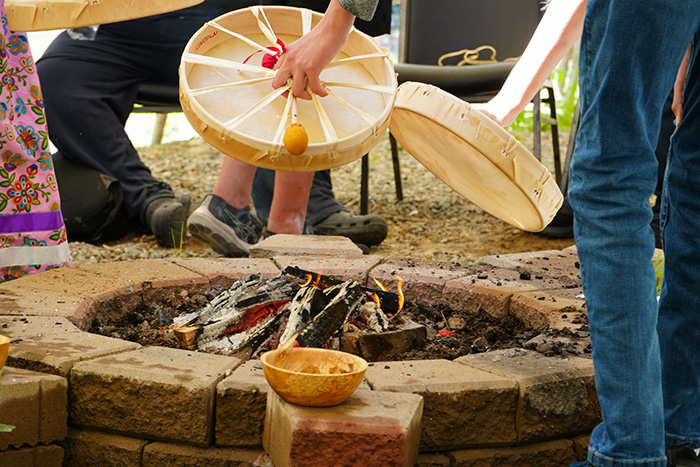
The Drum Birthing Ceremony took place at the outdoor learning tent next to Saswin, about a week after the drums had a chance to rest and dry out. The three teachers were present once again and the ceremony was opened with prayer, song and drumming. Everyone held their drum on their lap close to their hearts. They were invited to approach the sacred fire -- burning warmly in the center of the tent with the heat and smoke escaping through the roof opening – to pass their drum over the fire to tone and tighten the drum surface in preparation of playing it. They were given tobacco once again -- this time to sprinkle on top of their drum – awaiting the three men performing the ceremony to come around and sing/drum over their personal drum – causing the tobacco to bounce; come to life on the surface (birth). Berries were offered to each person to dab on the drum surface, leaving its red juice, symbolic of the heartbeat, love, and renewal of life between the physical and spiritual realms. A tobacco tie was made by each drum holder and tied to the bottom of their drum for use at a future time. The long tails of lacing leftover from the drum construction, the umbilical cord, is snipped by the drum makers. They are instructed to bury the cord in a private area, along with the tobacco pouch and a prayer. Then the drum was ready to be played by the maker once they were ready to do so! The group travelled in a circle past the three teachers, shaking hands in gratitude and exiting the learning tent from the way they entered, completing the circle, and the ceremony. Lunch was enjoyed over at Saswin. Questions, discussion, and unity were on the menu, accompanied by delicious treats and a group of new members to carry on the tradition of the drum.
